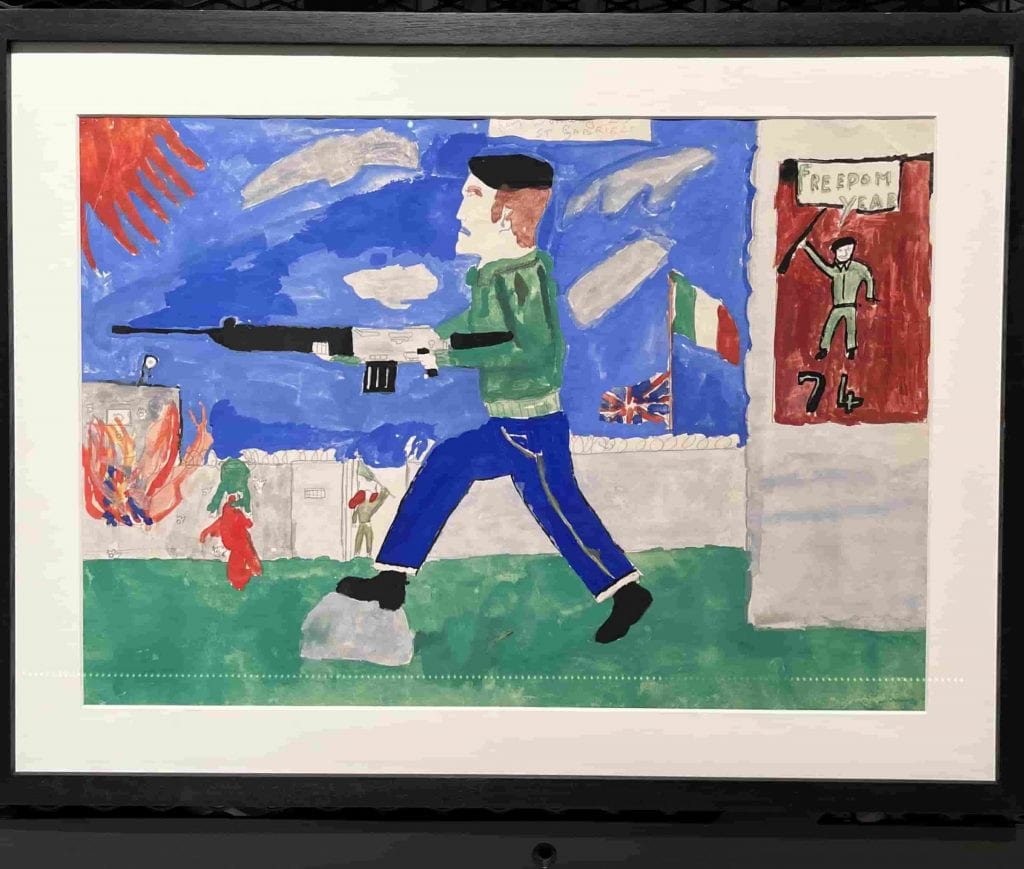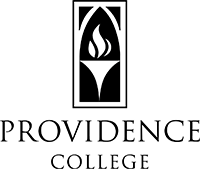Irish Troubles Through the Eyes of a Child
By Julia Zgurzynski
At the National Army Museum, there is an interesting exhibit on “War and Society”. One of the many collections of art and artifacts in the exhibit was focused on Northern Ireland. One piece of art which particularly stood out to me was this painting done by a school child for class. The museum explains that the boy who drew and painted the picture was Jim Donnelly. He drew the picture of a member of the Irish Republican Army when he was a child in 1972, and when he grew up, he joined the IRA himself, and participated in a revolt at the Maze Prison. The illustration features specific images of the war, including barbed wire, fire, the machine gun, and the soldier in his beret, which indicate how familiar the boy was with war. It is sad to know that conflict and death took up so much space in a child’s world.

As I looked at the picture, I was reminded of the pictures I used to draw myself in school, of the American Revolutionary war. I remember learning about the minutemen, George Washington, and the Redcoats, and drawing them with the same magic marker and pencil strokes that Jim Donnelly used for his picture. Overall, I remember the way that history books portrayed the American soldiers and the American revolutionary cause as glorious and heroic. The children of Irish nationalists may have felt a similar kind of high regard for the cause of Irish Home Rule. For, the Irish Troubles and the American Revolutionary War are similar in some ways—they are both wars between volunteer armies of a colony and British soldiers, motivated by a country’s desire to rule itself. By noticing the similarities that The Troubles have to our own founding war, I was better able to relate to the children’s perspective on the Irish Troubles. In addition, I realized how much I could not relate to their actual experience— I do not know what it is like to personally live through a war fought at home, with the instability and destruction of war all around.
In class we read a play called The Ferryman, which gives childrens’ perspectives on The Troubles, specifically the boys. For instance, Shane is fired up about the injustice the Irish people are suffering at the hands of British soldiers, and he feels called to support those who fight back, like the hunger strikers. He reports on life in the city to the country boys, telling them about the British soldiers coming in with “Black Saracen” tanks, “shooting dogs” and beating civilians. He hates the British, and is interested in the power that the IRA can give him. I can imagine Shane drawing a picture like Jim Donnelly’s when he was younger. On the other hand, Shane’s friend Declan also hates what the British are doing to his country, but he is less inclined to trust the IRA. Therefore, the play shows that the children of the Troubles had varied opinions on the war. In contrast, when American children think of our comparable conflict, the Revolutionary War, the sentiments are unanimously in support of the colonists. Thus, the children of the Troubles not only experienced war first hand in a way that we never have, but they also had to navigate the complex loyalties of a war for their independence, in a way we never have. Therefore, we can not fully understand the suffering that the Irish children endured, but by relating the Troubles to the American Revolution, we can gain some sense of their perspective, and remember what it was like to be a child thinking about war.





